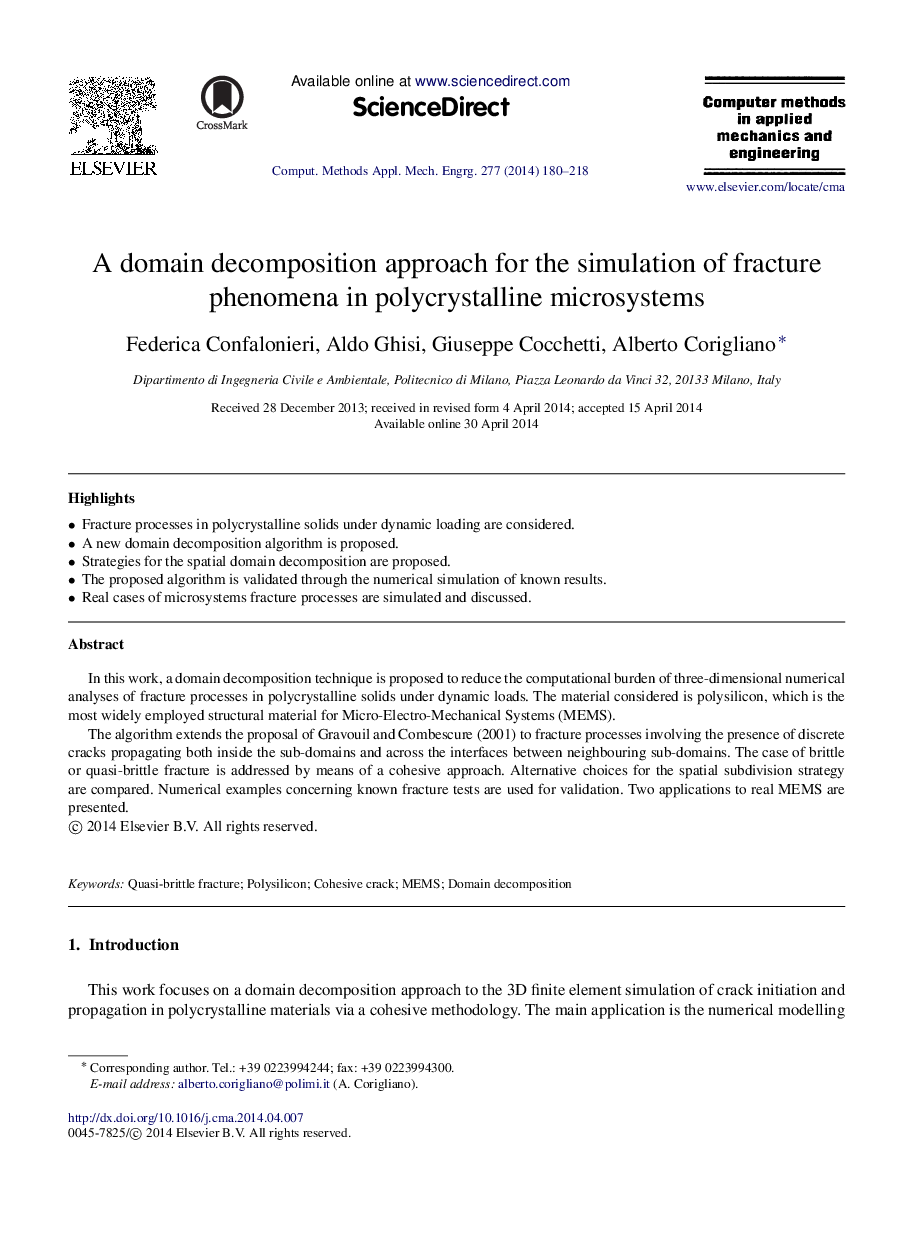| Article ID | Journal | Published Year | Pages | File Type |
|---|---|---|---|---|
| 498182 | Computer Methods in Applied Mechanics and Engineering | 2014 | 39 Pages |
•Fracture processes in polycrystalline solids under dynamic loading are considered.•A new domain decomposition algorithm is proposed.•Strategies for the spatial domain decomposition are proposed.•The proposed algorithm is validated through the numerical simulation of known results.•Real cases of microsystems fracture processes are simulated and discussed.
In this work, a domain decomposition technique is proposed to reduce the computational burden of three-dimensional numerical analyses of fracture processes in polycrystalline solids under dynamic loads. The material considered is polysilicon, which is the most widely employed structural material for Micro-Electro-Mechanical Systems (MEMS).The algorithm extends the proposal of Gravouil and Combescure (2001) to fracture processes involving the presence of discrete cracks propagating both inside the sub-domains and across the interfaces between neighbouring sub-domains. The case of brittle or quasi-brittle fracture is addressed by means of a cohesive approach. Alternative choices for the spatial subdivision strategy are compared. Numerical examples concerning known fracture tests are used for validation. Two applications to real MEMS are presented.
